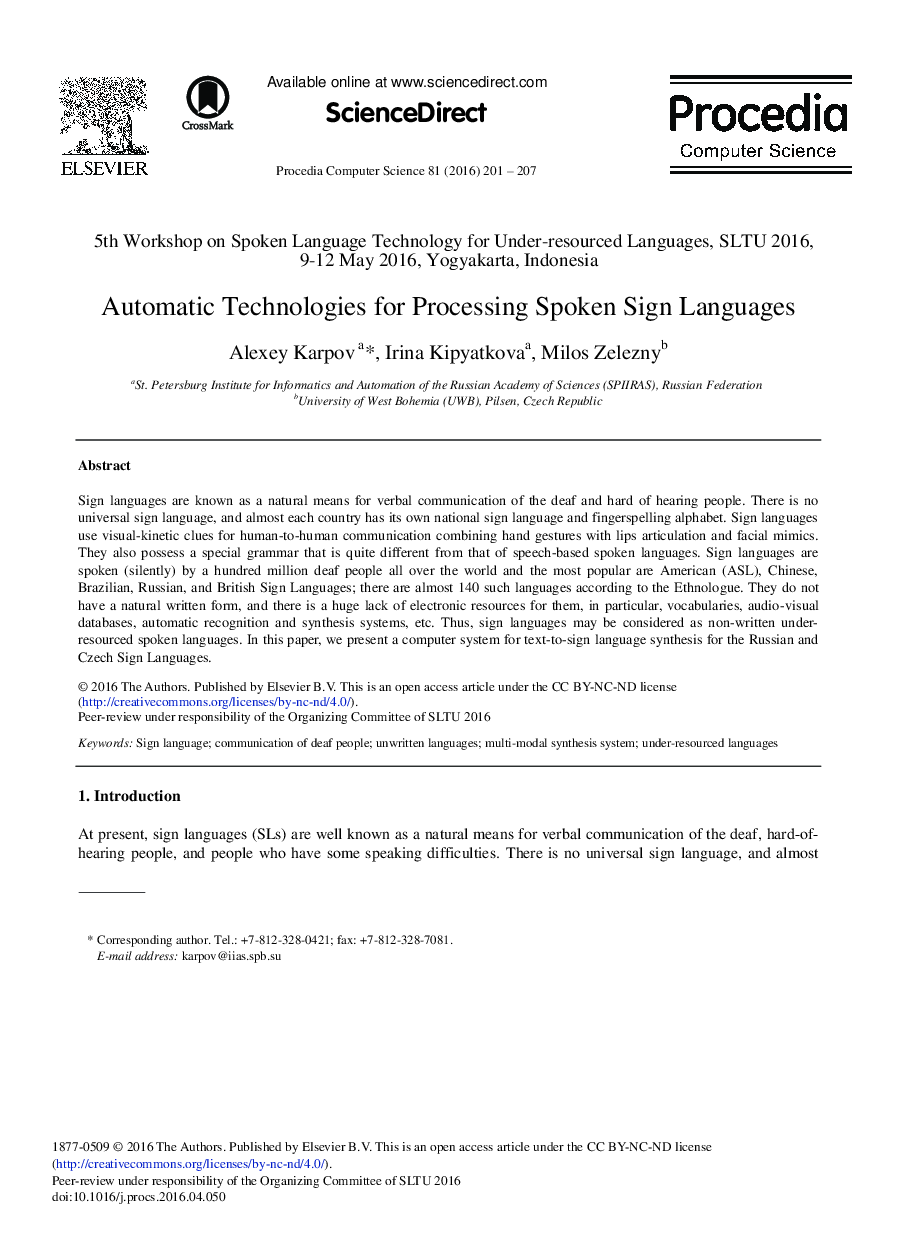| Article ID | Journal | Published Year | Pages | File Type |
|---|---|---|---|---|
| 485456 | Procedia Computer Science | 2016 | 7 Pages |
Sign languages are known as a natural means for verbal communication of the deaf and hard of hearing people. There is no universal sign language, and almost each country has its own national sign language and fingerspelling alphabet. Sign languages use visual-kinetic clues for human-to-human communication combining hand gestures with lips articulation and facial mimics. They also possess a special grammar that is quite different from that of speech-based spoken languages. Sign languages are spoken (silently) by a hundred million deaf people all over the world and the most popular are American (ASL), Chinese, Brazilian, Russian, and British Sign Languages; there are almost 140 such languages according to the Ethnologue. They do not have a natural written form, and there is a huge lack of electronic resources for them, in particular, vocabularies, audio-visual databases, automatic recognition and synthesis systems, etc. Thus, sign languages may be considered as non-written under-resourced spoken languages. In this paper, we present a computer system for text-to-sign language synthesis for the Russian and Czech Sign Languages.
